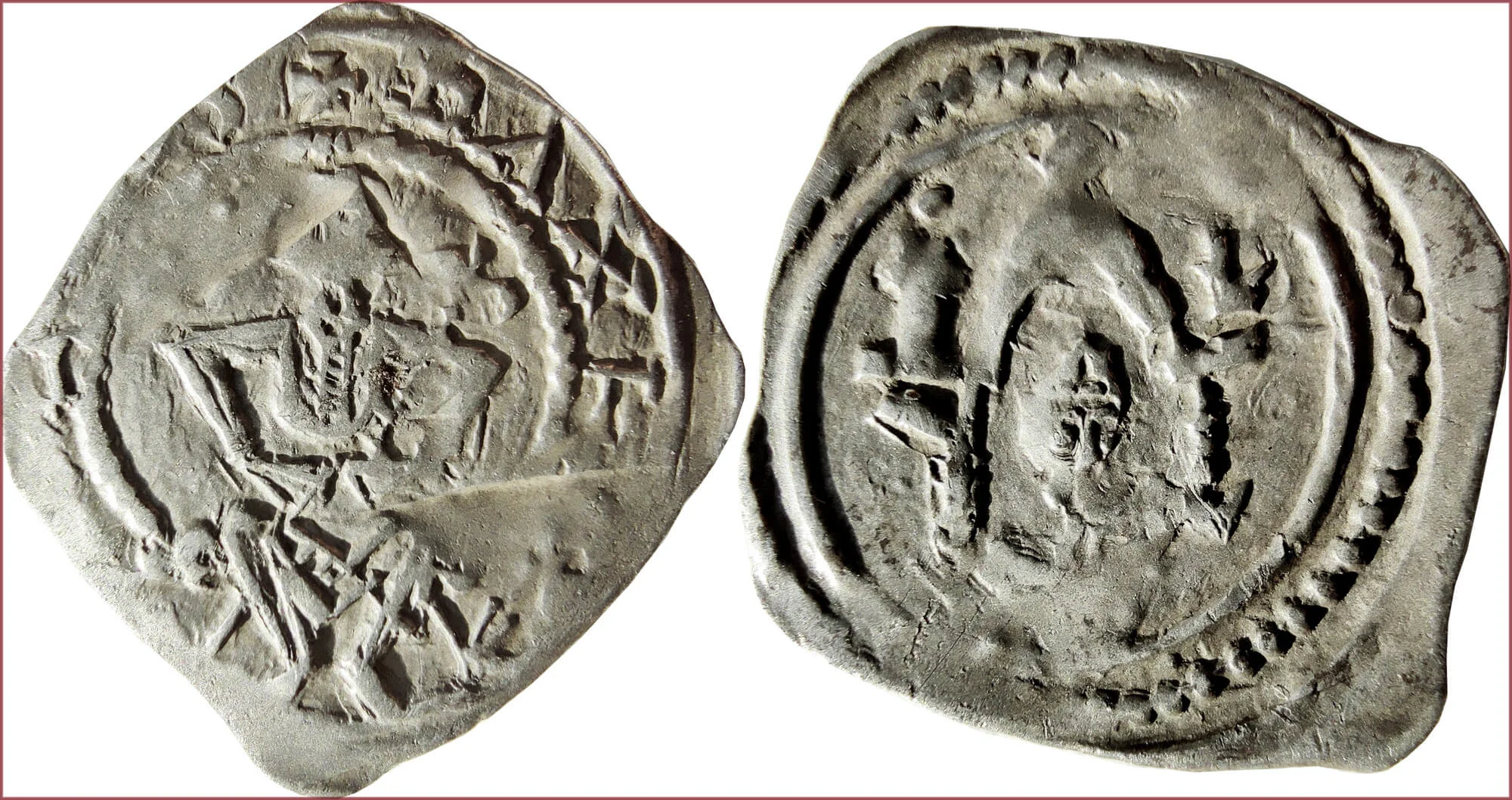FRIESACHER PFENNIG: COIN OF STYRIA
Friesacher pfennig, 1220-1230: Duchy of Styria (Austria)
The coin (pfennig) is so popular among numismatists that it is allocated to a separate type — Friesacher pfennig.
Ruler(s): Duke of Styria Leopold VI the Glorious (1176-1230) + Archbishop of Salzburg Eberhard von Regensberg (1170-1246).
ND (no date).
Unfortunately, the legend on the coin (usually the inscription FRISACH /or close to it / and the name of the ruler) is almost unreadable.
The standard plot for this type of coin (friesacher pfennig): a ruler on a throne with a scepter decorated with a lily + archbishop under the arch with two towers.
Ptuj Mint (German "Pettau"; modern Slovenia).
In 1918, the Duchy of Styria was divided into two parts: southern Lower Styria (south of the Moore River), where the majority of the population were Slovenes, became part of the Kingdom of Serbs, Croats and Slovenes (now part of Slovenia), while the northern and central parts of the Duchy formed the federal state of Styria as part of the Austrian Republic.
Due to the high similarity in the design of these coins of different mints, errors with accurate identification occur. Thus, some sources specifically identify this coin as follows (it is difficult to verify the accuracy of identification): "Friesacher pfennig from the Duchy of Carinthia; Bernhard von Spanheim; Mint of Kostanjevica Monastery (Slovenia)".
- Silver: 20 mm - 0.98 g
- Reference price: 17$
COIN FRIESACHER PFENNIG — WHERE & WHEN (coins catalog: by names & emitents)
- MEDIEVAL CENTRAL EUROPE (Duchy of Styria, Duchy of Carinthia...; 12th-14th centuries): friesacher pfennig (often just "pfennig" or even "friesach denar")
About the name of the coin friesacher pfennig: the name of the coin (rarely: "friesacher denar") refers to the city where the prototype of this small medieval silver coin, which was extremely widespread for more than two centuries in a row, appeared. It is about the Austrian city of Friesach, where the Archbishops of Salzburg (probably firstly in the time of Archbishop Conrad I, 1106-1147) set up a mint near a silver mine located there.

